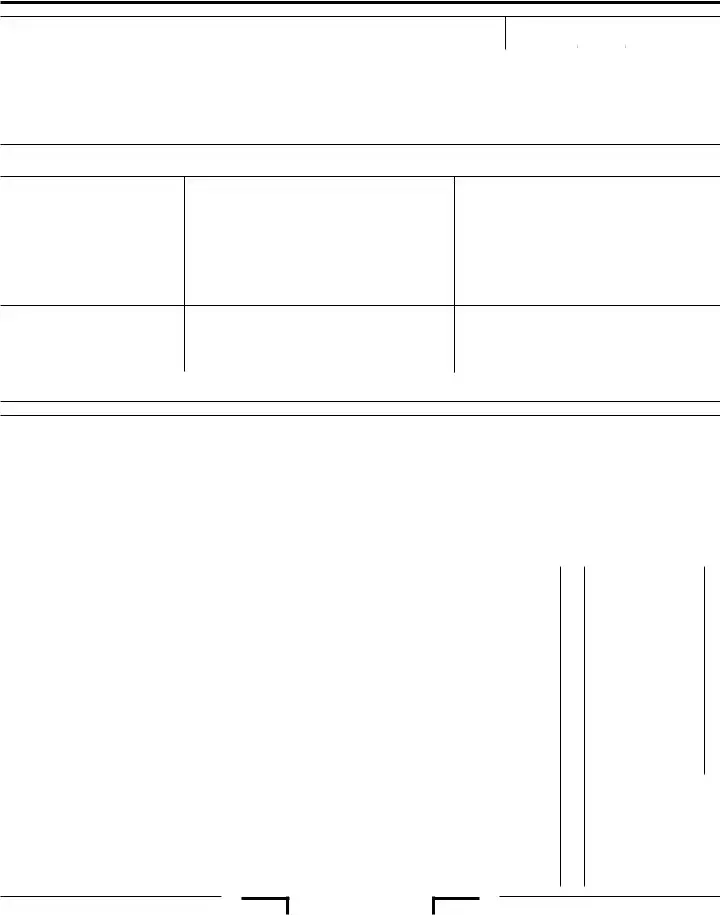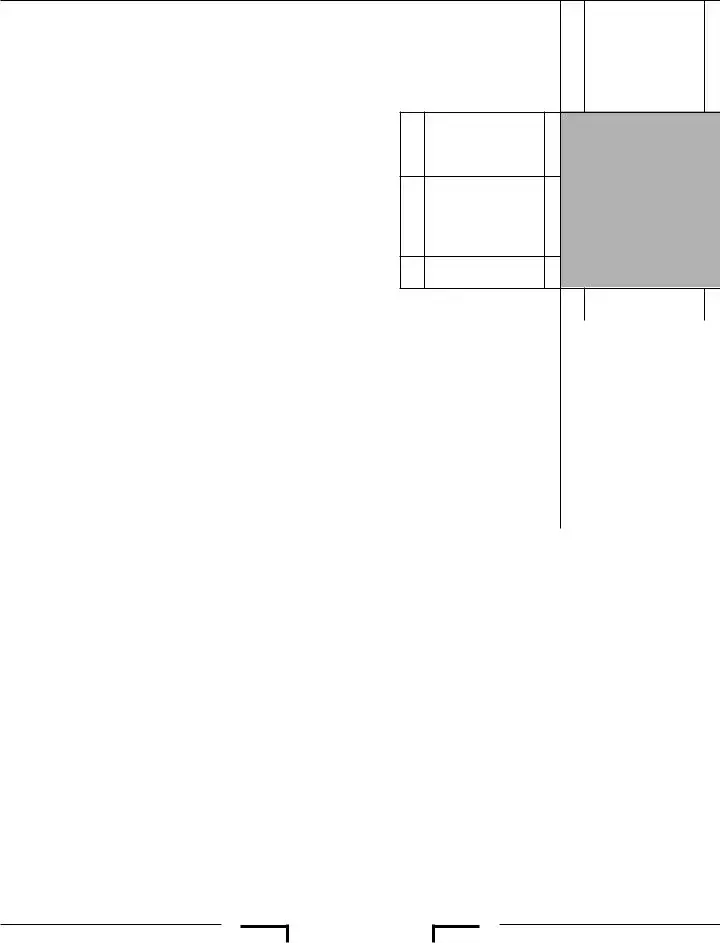|
|
any amounts, enter -0- |
. . . . . . . . . . . . . . . . . . . . . |
23. |
00 |
24 |
|
Subtract line 23 from line 16 |
24 |
|
00 |
|
|
|
|
25 |
|
Enter the smaller of line 21 or line 22 |
25 |
|
00 |
|
|
|
|
26 |
Deductible benefits. Enter the smallest of line 21, line 22, or line 23 |
. . . . . . . . . . . . . . . . . . . . . |
. |
26 |
|
00 |
27 |
Excluded benefits. Subtract line 26 from line 25. If zero or less, enter -0- |
. . . . . . . . . . . . . . . . . . . . . |
. |
27 |
|
00 |
28 |
Taxable benefits. Subtract line 27 from line 24. If zero or less, enter -0- |
. . . . . . . . . . . . . . . . . . . . . |
. |
28 |
|
00 |
29 |
Enter $3,000 ($6,000 if two or more qualifying persons) |
. . . . . . . . . . . . . . . . . . . . . |
. |
29 |
|
00 |
30 |
Add line 26 and line 27 |
. . . . . . . . . . . . . . . . . . . . . |
30. |
|
00 |
31 |
Subtract the amount on line 30 from the amount on line 29. If zero or less, stop. You do not qualify for the credit. |
|
|
|
|
|
|
|
Exception – If you paid 2008 expenses in 2009, see instructions for line 11 |
. . . . . . . . . . . . . . . . . . . . . |
. |
31 |
|
00 |
32 |
Complete Side 1, Part III, line 2. Add the amounts in column (e) and enter the total here |
. |
32 |
|
00 |
33 |
Enter the amount from your federal Form 2441, Part III, line 34 |
. . . . . . . . . . . . . . . . . . . . . |
33. |
|
00 |
34 |
Enter the smaller of line 31, line 32, or line 33. Also, enter this amount on Side 1, Part III, line 3 and |
|
|
|
|
|
|
|
complete line 4 through line 12 |
. . . . . . . . . . . . . . . . . . . . . |
34. |
|
00 |
Worksheet – Credit for 2008 Expenses Paid in 2009 |
|
|
|
|
|
|
|
1. |
Enter your 2008 qualified expenses paid in 2008. If you did not claim the credit for these expenses on your 2008 |
|
|
|
|
|
|
|
return, get and complete a 2008 form FTB 3506 for these expenses. You may need to amend your 2008 return |
. . . |
|
. . . . |
. 1.____________________ |
2. |
Enter your 2008 qualified expenses paid in 2009 |
. . . . . . . . . . . . . . . . . . . . . |
. . . |
|
. . . . |
. 2.____________________ |
3. |
Add the amounts on line 1 and line 2 |
. . . . . . . . . . . . . . . . . . . . . |
. . . |
|
. . . . |
. 3.____________________ |
4. |
Enter $3,000 if care was for one qualifying person ($6,000 for two or more) |
. . . . . . . . . . . . . . . . . . . . . |
. . . |
|
. . . . |
. 4.____________________ |
5. |
Enter any dependent care benefits received for 2008 and excluded from your income |
|
|
|
|
|
|
|
|
|
(from your 2008 form FTB 3506, Part IV, line 28) |
. . . . . . . . . . . . . . . . . . . . . |
. . . |
|
. . . . |
. 5.____________________ |
6. |
Subtract amount on line 5 from amount on line 4 and enter the result |
. . . . . . . . . . . . . . . . . . . . . |
. . . |
|
. . . . |
. 6.____________________ |
7. |
Compare your and your spouse’s/RDP’s earned income for 2008 and enter the smaller amount |
. . . |
|
. . . . |
. 7.____________________ |
8. |
Compare the amounts on line 3, line 6, and line 7 and enter the smallest amount |
. . . . . . . . . . . . . . . . . . . . . |
. . . |
|
. . . . |
. 8.____________________ |
9. |
Enter the amount from your 2008 form FTB 3506, Side 1, Part III, line 6 |
. . . . . . . . . . . . . . . . . . . . . |
. . . |
|
. . . . |
. 9.____________________ |
10. |
Subtract amount on line 9 from amount on line 8 and enter the result. If zero or less, stop here. You cannot increase |
|
|
|
|
|
|
|
your credit by any previous year’s expenses |
. . . . . . . . . . . . . . . . . . . . . |
. . . |
|
. . . . |
. 10.____________________ |
11. |
Enter your 2008 federal adjusted gross income (AGI) (from your 2008 Form 540/540A, line13; |
|
|
|
|
|
|
|
or Long Form 540NR, line 13) |
. . . . . . . . . . . . . . . . . . . . . |
. . . |
|
. . . . |
. 11.____________________ |
12. |
2008 federal AGI decimal amount (from 2008 form FTB 3506, instructions for line 7) |
. . . . |
. . . . . . . . . . . . . . . . . . . . . |
. . . |
|
. . . . |
. 12.______ . ______ ______ |
13. |
Multiply line 10 by line 12 |
. . . . . . . . . . . . . . . . . . . . . |
. . . |
|
. . . . |
. 13.____________________ |
14. |
2008 California AGI decimal amount (from 2008 form FTB 3506, instructions for line 9) |
. . . |
|
. . . . |
. 14.______ . ______ ______ |
15. |
Multiply line 13 by line 14. Enter the result here and on your 2009 form FTB 3506, Side 1, Part III, line 11 |
. . . |
|
. . . . |
. 15.____________________ |


